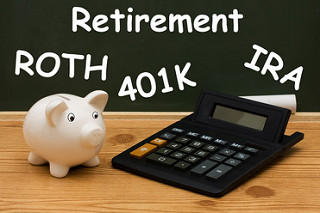
Older Americans Month: Retirement Basics
It’s a well-known fact that the majority of Americans have not planned for their retirement. Research from the Insured Retirement Institute® shows that only a third of Baby Boomers are confident their savings will last throughout all their retirement years – the lowest mark in four years of studying this generation. A 2014 Harris Poll shows that 25 percent have done nothing at all to prepare for retirement. This year there will be more Millennials in the US than Baby Boomers and only half of them are planning for their retirement.
Without solid planning the promise of the American Dream – work hard for 40 years and retire in comfort – may not be attainable. National Retirement Planning Week ® is the perfect time to take another look at your retirement options. Social Security may not be around when it comes time to retire, and even if it is still there, it may not provide enough income for the lifestyle you envision.
To make matters worse, few employers today offer a traditional company pension plan that guarantees a specific income at retirement. On top of that, people are living longer and must find ways to fund those additional years of retirement.
But there's good news: Retirement planning is easier than it used to be, thanks to the many tools and resources available.
Determine your retirement income needs
It's common to discuss desired annual retirement income as a percentage of current income. The appeal of this approach lies in its simplicity. The problem, however, is that is doesn't account for individual needs and situations.
Remember to take inflation into account. The average annual rate of inflation over the past 20 years has been approximately 2.5 percent. (Source: Consumer price index (CPI-U) data published by the U.S. Department of Labor, 2013.)
To be able to retire in comfort you’ll need a nest egg that can provide enough income to fill the gap left by other income sources. But exactly how much is enough? These questions can help you find the answer:
- What is your planned retirement age? The younger you retire, the longer your retirement will be, and the more money you'll need to carry you through it.
- What is your life expectancy? The longer you live, the more years of retirement you'll have to fund.
- What rate of growth can you expect from your savings now and during retirement? Be conservative when projecting rates of return.
- Do you expect to dip into your principal? If so, you may deplete your savings faster than if you just live off investment earnings. Build in a cushion to guard against these risks.
Build your retirement fund: Save, save, save
When you know roughly how much money you'll need, your next goal is to save that amount. First, you'll have to map out a savings plan that works for you. Assume a rate of return that you are comfortable with, and then determine approximately how much you'll need to save every year between now and your retirement to reach your goal.
It's never too early to get started (ideally, begin saving in your 20s). Preferably arrange to have certain amounts taken directly from your paycheck and automatically invested in accounts of your choice (e.g., 401(k) plans, payroll deduction savings). This arrangement could help reduce the risk of impulsive or unwise spending that could threaten your savings plan–out of sight, out of mind. If possible, save more than you think you'll need to provide a cushion.
If you don't have the time, energy, or inclination to do this yourself, talk to a financial professional. He or she can explain the options that are available to you, and can assist you in selecting investments that are appropriate for your goals, risk tolerance, and time horizon.
Note: In addition to any income taxes owed, a 10 percent premature distribution penalty tax may apply to taxable distributions made from employer-sponsored retirement plans, IRAs, and annuities prior to age 59½ (prior to age 55 for employer-sponsored retirement plans in some circumstances).
IMPORTANT DISCLOSURES
Material contained in this article is provided for information purposes only and is not intended to be used in connection with the evaluation of any investments offered by David Lerner Associates, Inc. This material does not constitute an offer or recommendation to buy or sell securities and should not be considered in connection with the purchase or sale of securities.
To the extent that this material concerns tax matters, it is not intended or written to be used, and cannot be used, by a taxpayer for the purpose of avoiding penalties that may be imposed by law. Each taxpayer should seek independent advice from a tax professional based on his or her individual circumstances.
These materials are provided for general information and educational purposes based upon publicly available information from sources believed to be reliable– we cannot assure the accuracy or completeness of these materials. The information in these materials may change at any time and without notice.
Some of this material has been provided by Broadridge Investor Communications Solutions, Inc.
David Lerner Associates does not provide tax or legal advice. The information presented here is not specific to any individual's personal circumstances.
Member FINRA & SIPC.

